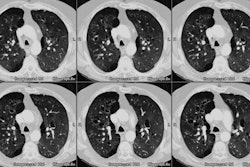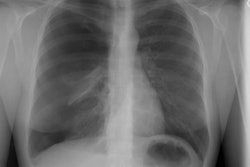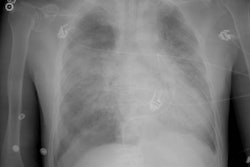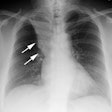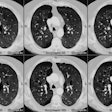Bronchial anastomotic complications in lung transplant recipients: virtual bronchoscopy for noninvasive assessment.
McAdams HP, Palmer SM, Erasmus JJ, Patz EF, Connolly JE, Goodman PC, Delong DM, Tapson VF
PURPOSE: To compare the accuracy of virtual bronchoscopy (VB) with that of axial computed tomography (CT) in the assessment of bronchial anastomotic complications in lung transplant recipients. MATERIALS AND METHODS: Twenty-seven bronchial anastomoses in 17 patients were evaluated with helical CT. Axial CT and VB images were evaluated for surface irregularity and the presence, length, and severity of stenosis. Findings were correlated with the results of fiberoptic bronchoscopy (FOB). RESULTS: There were 12 anastomotic stenoses at FOB. Pooled accuracy (among all four readers) of VB and axial CT for diagnosis of clinically relevant stenosis was 97% and 80%, respectively, at the right bronchial anastomoses and 92% and 75%, respectively, at the left bronchial anastomoses. Pooled accuracy of VB and Axial CT for stenosis length was 72% and 62%, respectively, at the right anastomoses and 81% and 69%, respectively, at the left anastomoses. These differences were not statistically significant. Both the VB and axial CT images showed surface irregularities when anastomotic infection (n = 2) or dehiscence (n = 1) was present but resulted in an overdiagnosis of mucosal abnormalities when anastomoses were normal. CONCLUSION: VB was slightly more accurate than axial CT for diagnosis of clinically relevant stenoses at bronchial anastomoses in lung transplant recipients. However, because VB is not 100% accurate and has no role in the diagnosis of infection or dehiscence, it probably will not replace FOB for assessment of bronchial anastomotic complications in this population.
